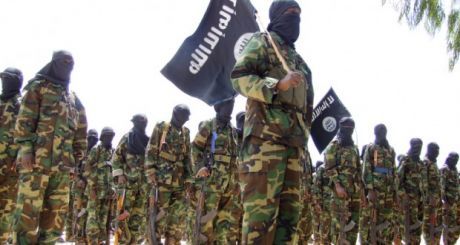Shared
You are here
The roots of Al Shabaab

April 8, 2015
The killing of 148 students at Kenya’s Garissa University College by Somali Islamist insurgents Al Shabaab marks the latest episode of bloodletting in a cycle of violence into which the region has been locked for some time.
Frequently, commentators have announced Al Shabaab to have been finally routed by African Union AMISON “peace-keeping” forces and US military strikes, only to see the group bounce back and launch attacks inside Somalia and across the border into Kenya.
History
There is an historical precedence. At the turn of the 20th century Somali nationalist Sayyid Muhammad Abdullah Hassan led a 20-year holy war against British colonialism. A controversial and ruthless figure, Hassan’s aim was to unite the different clans, kick out the colonists and achieve self-determination. Dubbed “the mad Mullah” by the British, he was in fact a military genius adept at guerrilla warfare and inflicted heavy casualties on the British. In 1910 the British, desperate to avoid their own soldiers being killed, launched a proxy war to get rid of him once and for all.
They armed “friendly” clans, who instead of taking on Hassan descended into bloody feuding and banditry, tipping Somalia into utter chaos. This resulted in a terrible famine that by 1912 had killed a third of the population. Hassan’s forces were only finally crushed in 1920 when Winston Churchill, Britain’s secretary of state for war and air, ordered the newly formed RAF to bomb the insurgents. The RAF, in their first sortie over Africa, blew up Hassan’s forts, killed most of his family and scattered his forces.
UIC
Fast forward to late 1990s. Out of the chaos and suffering of the Somali civil war, made worse by a botched UN and US military intervention (the Black Hawk Down saga), arose various Islamist groups. They formed the Union of Islamic Courts (UIC), and set up a rudimentary (albeit brutal) system of government based on existing clan structures overlaid by Sharia courts.
For the first time in a decade there was some kind of stability and the beginnings of civil society in the areas run by the UIC, covering the capital Mogadishu, south and central Somalia. At that point the US and the West were content to see the Somali population stew in its own juices.
The UIC contained moderates as well as hardliners, but we can only speculate as to whether elements could have formed the basis for a renewal of Somali society. Post 9/11 and with George W Bush’s “war on terror” Somalia was back on the US’s radar – unfortunately not for humanitarian reasons. Bush decided that the UIC were the equivalent of Al Qaida – they weren’t – and had to be crushed, without putting US boots on the ground. As in the early 1900s “friendly” warlords were armed, this time by the US to take on the UIC but were defeated.
But in 2006 its leaders made the mistake of provoking Ethiopia, the sub imperialist power in the Horn of Africa.
Al-Shabaab
The US gave the nod to the Ethiopians to invade Somalia on its behalf, bombing from the air and then occupying what was left of Mogadishu with 14,000 troops. They drove the UIC out into the bush where some regrouped, returning in more extreme form as al-Shabaab. The brutality of the occupying force and the insurgency it provoked saw the civilian population tipped into a huge humanitarian crisis. Sound familiar?
Meantime the US was cultivating former Somali warlords and corrupt politicians at various ‘peace conferences’ before anointing them as the transitional government in exile. Rival factions had their militia weaponised by the US and supported by mercenaries who weren’t that interested in distinguishing between civilians and insurgents.
Despite the fortune poured into Somalia to halt Al Shabaab most people, particularly in the south, continue to live in dire poverty. Life expectancy is around 50 years, among the worst in the entire world.
The escalating brutality that accompanied the Ethiopian/US occupation – detention, torture, civilian deaths, drone strikes, special forces operations etc – served as a recruiting sergeant for Al Shabaab. It turned into an African version of the Taliban – battle-hardened, experienced in hit-and-run tactics and now ideologically aligned with Al Qaida, and more recently Isis.
There is also a large Somali population in Kenya, originally refugees pushed over the border since the civil war period of the late 1980s onwards. Young Somalis particularly are looked upon by the Kenyan government as potential terrorists and harassed by the police and the army – driving some of them into the arms of Al Shabaab. This process was accelerated when Kenya joined Ethiopia in 2011 and also invaded Somalia.
In one sense Al Shabaab is only a reflection of the policy by the US and its regional proxies, that violence is somehow the solution to the tragedy facing the long-suffering Somali people and the families and survivors of the Garissa massacre.
This is shared from Socialist Worker (UK)
Section:
Topics:










